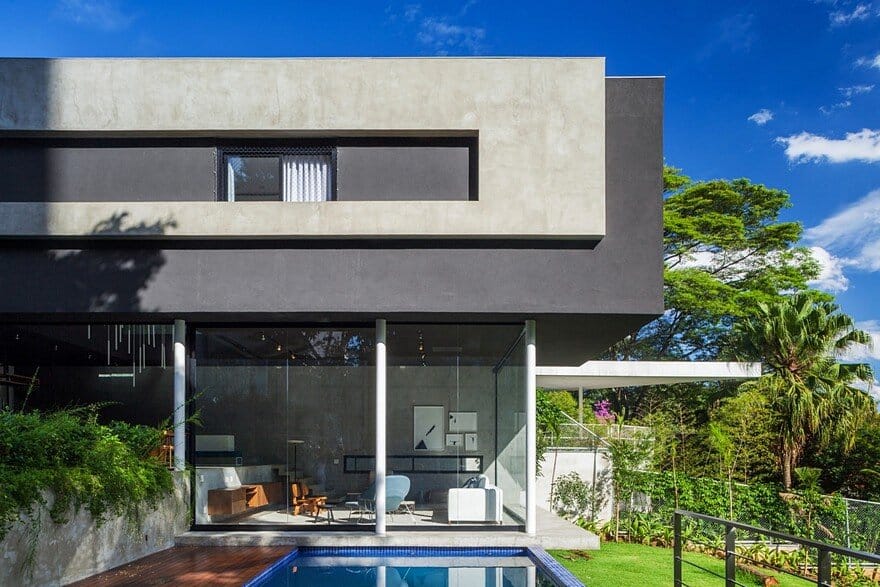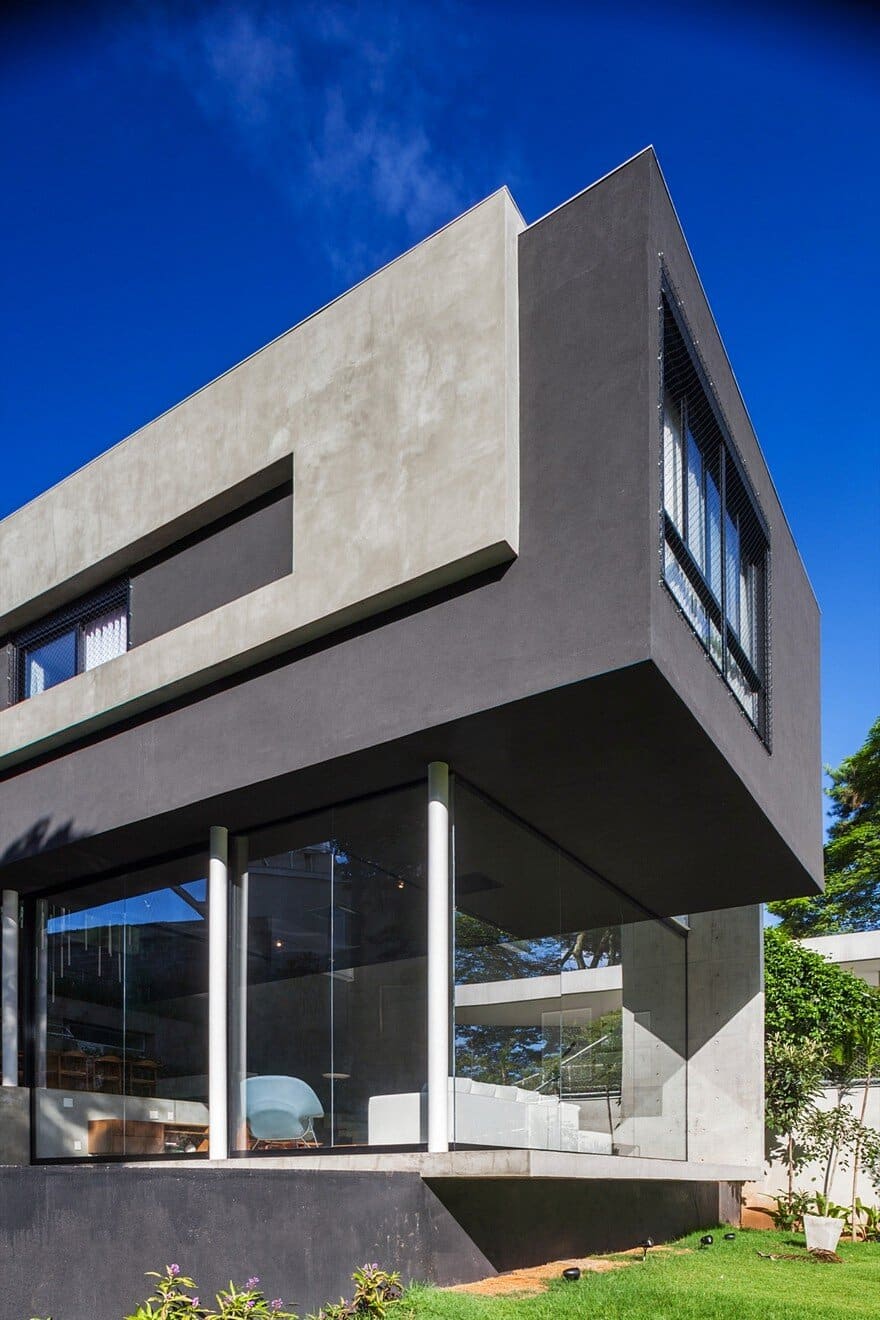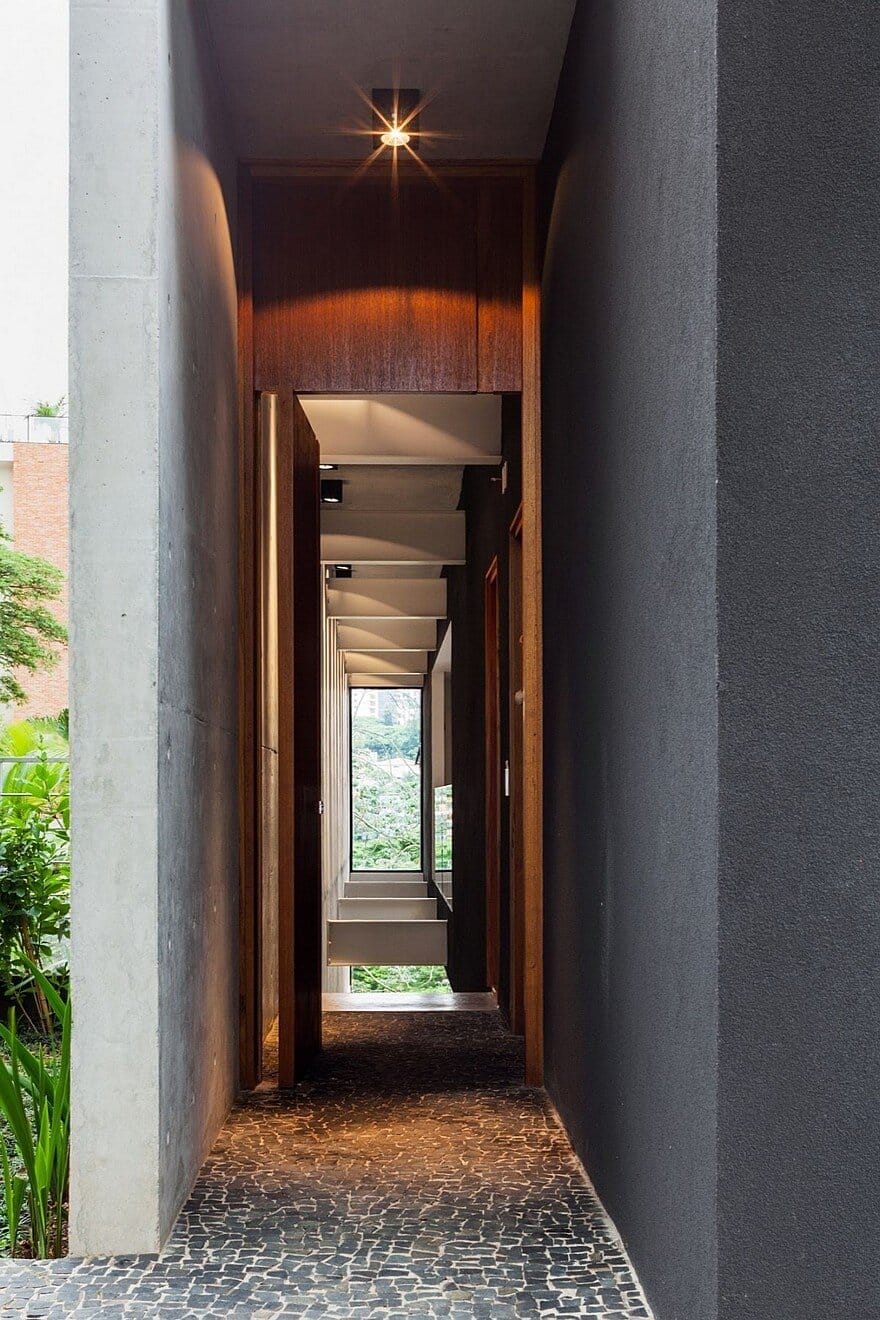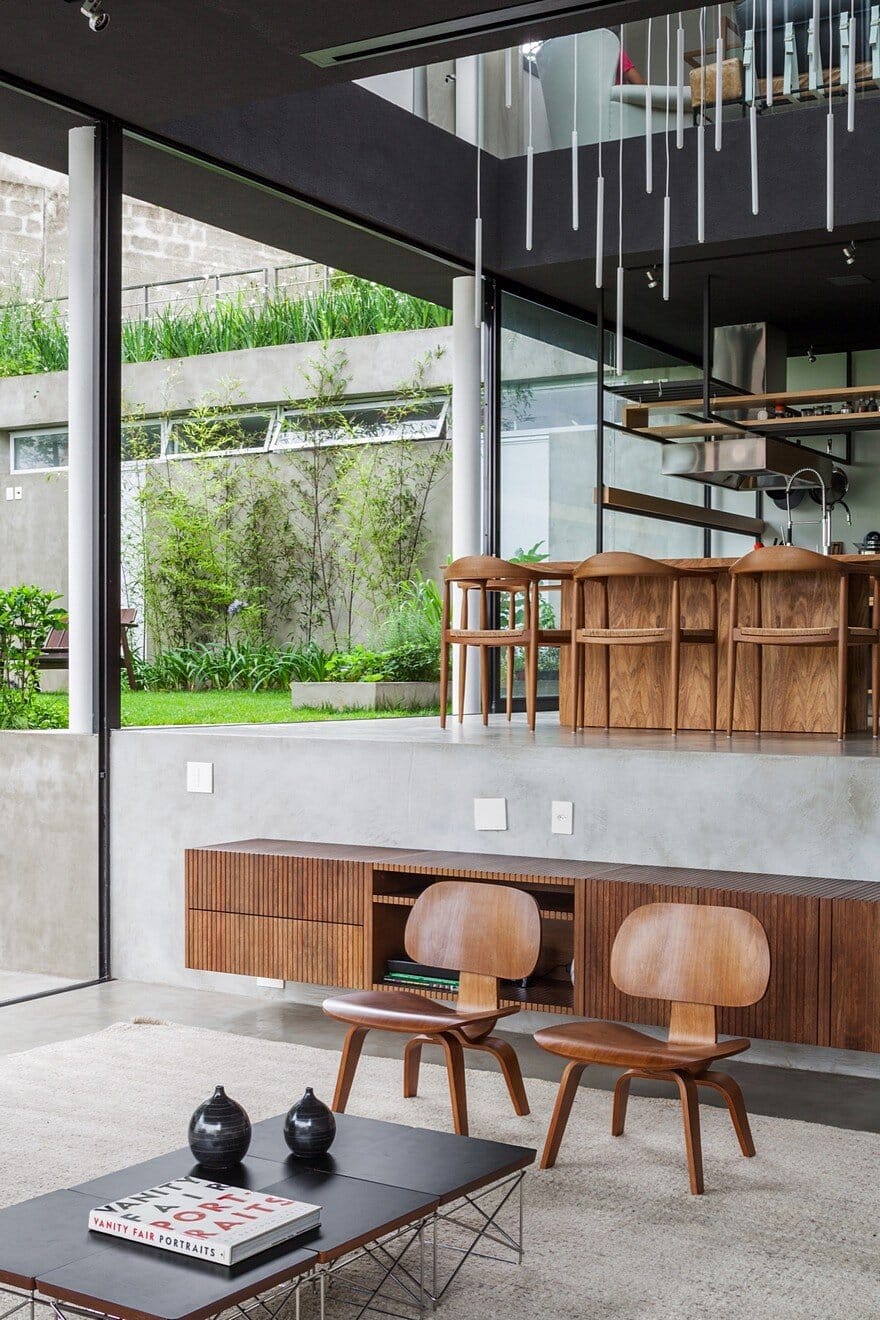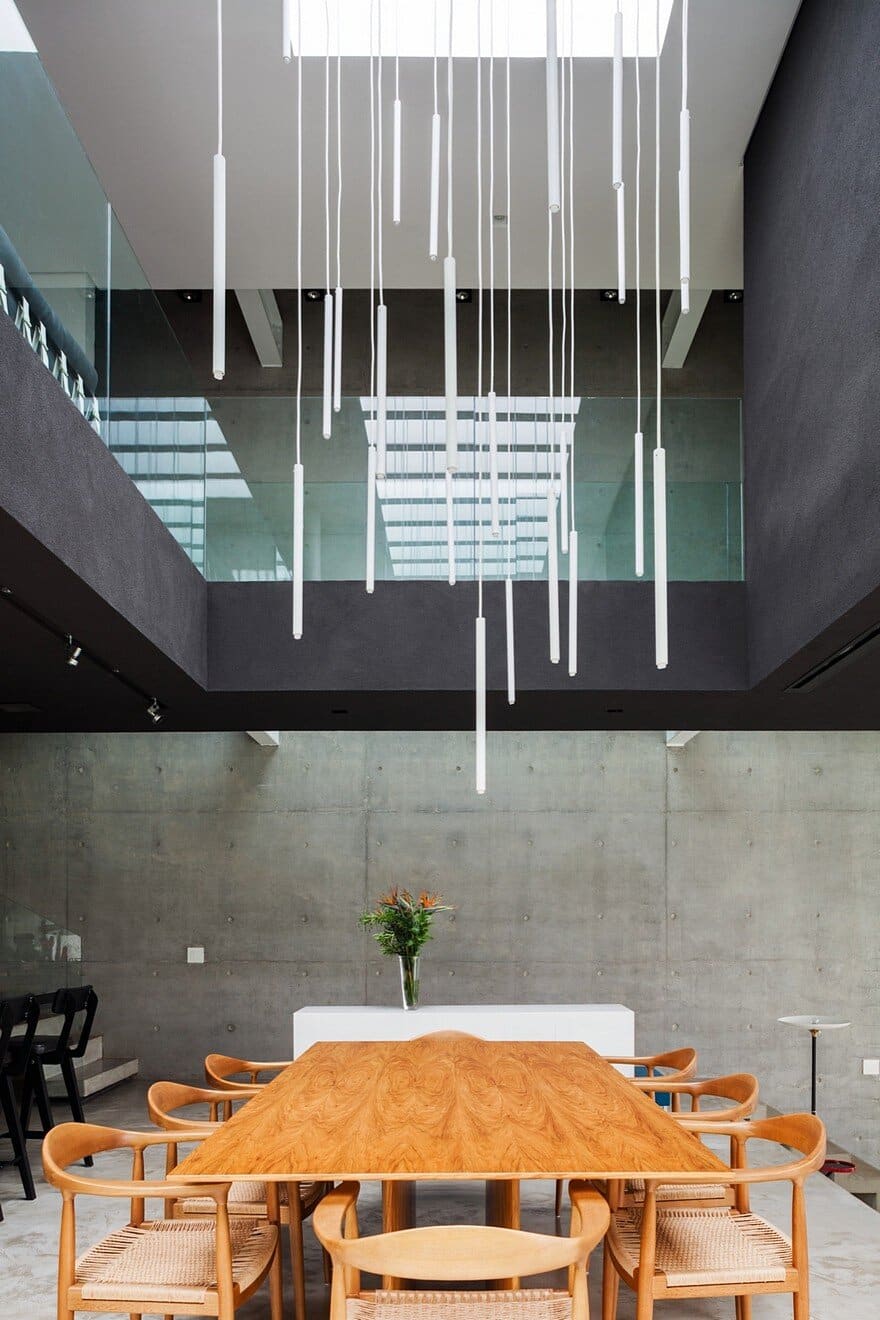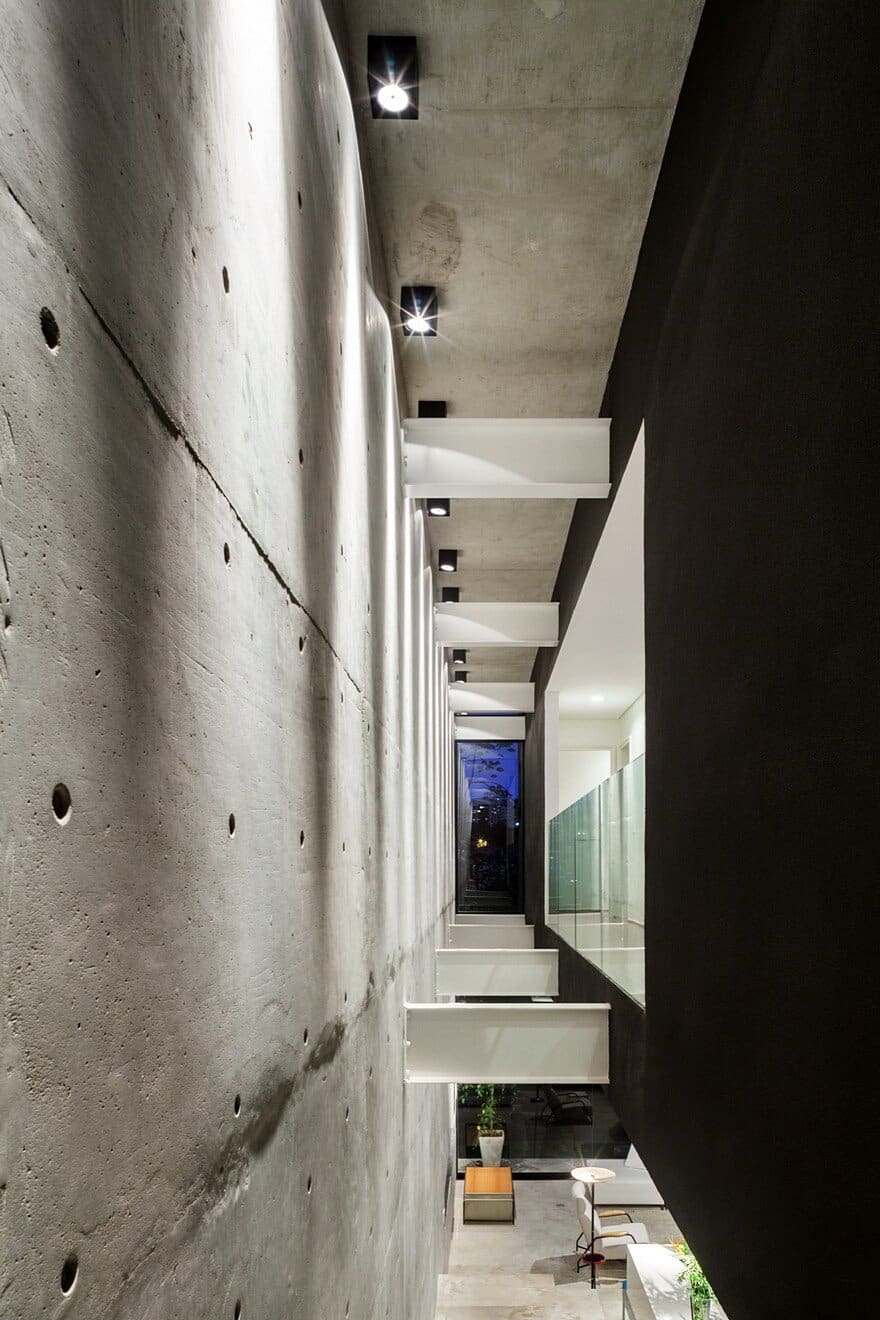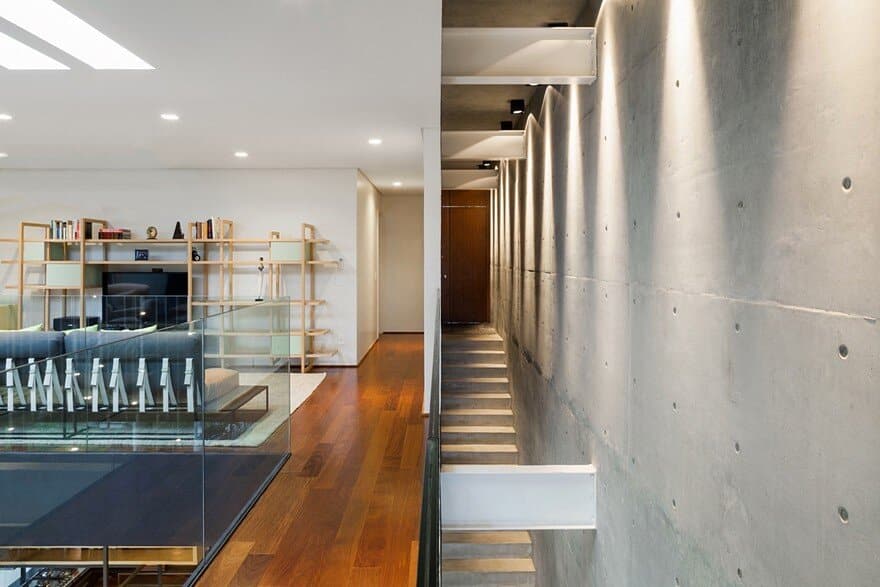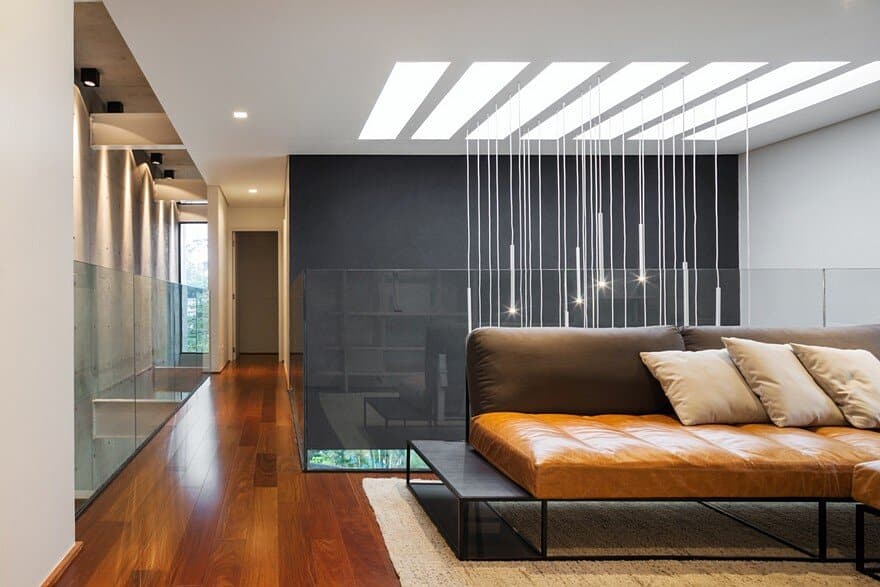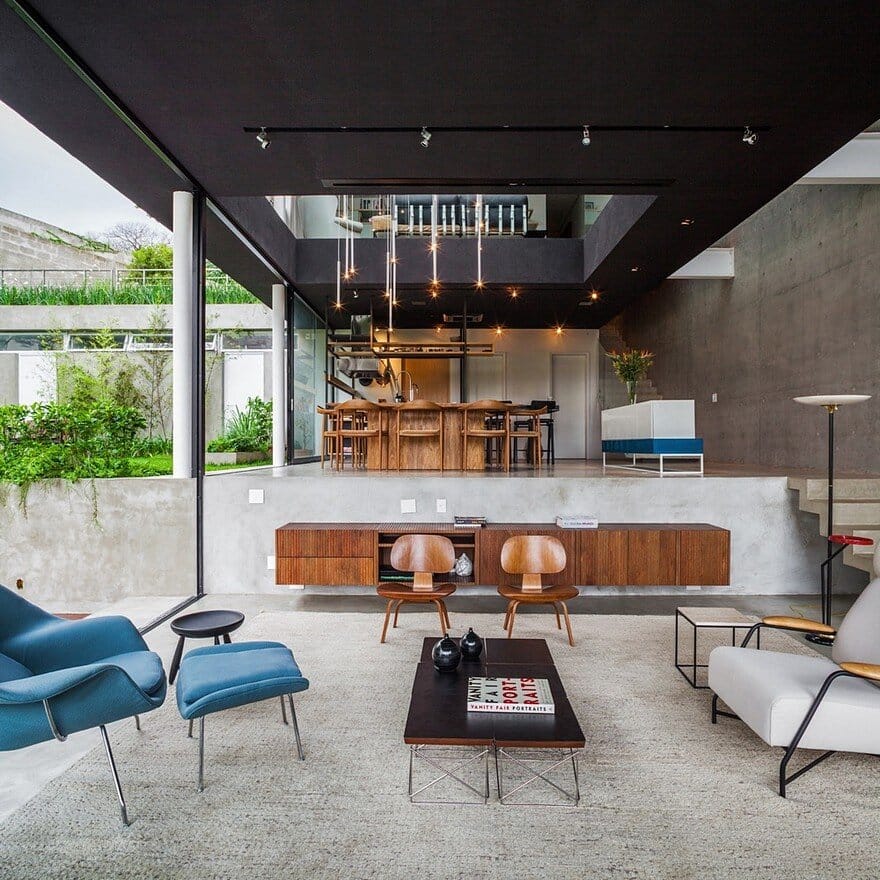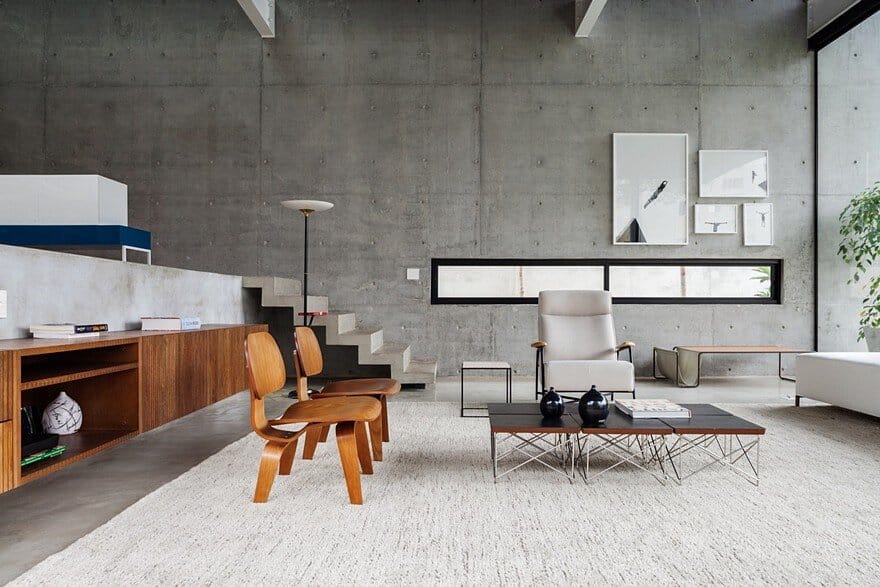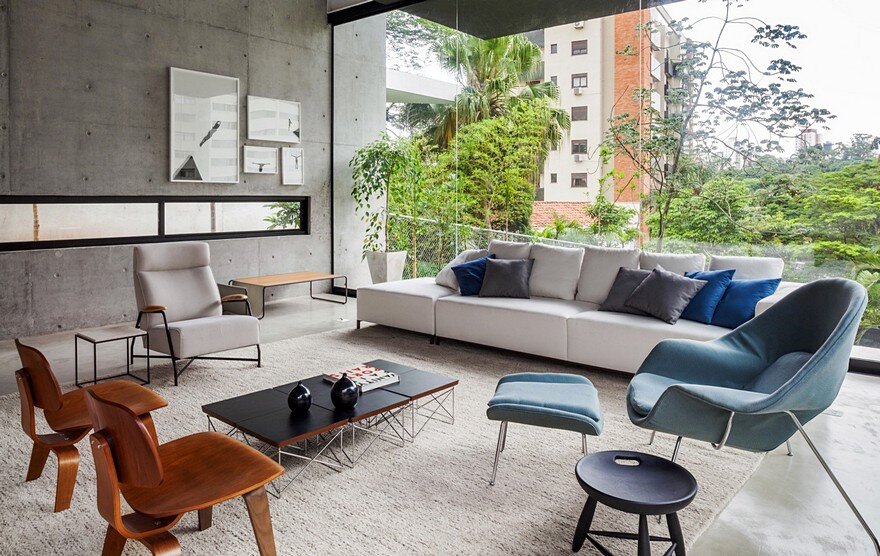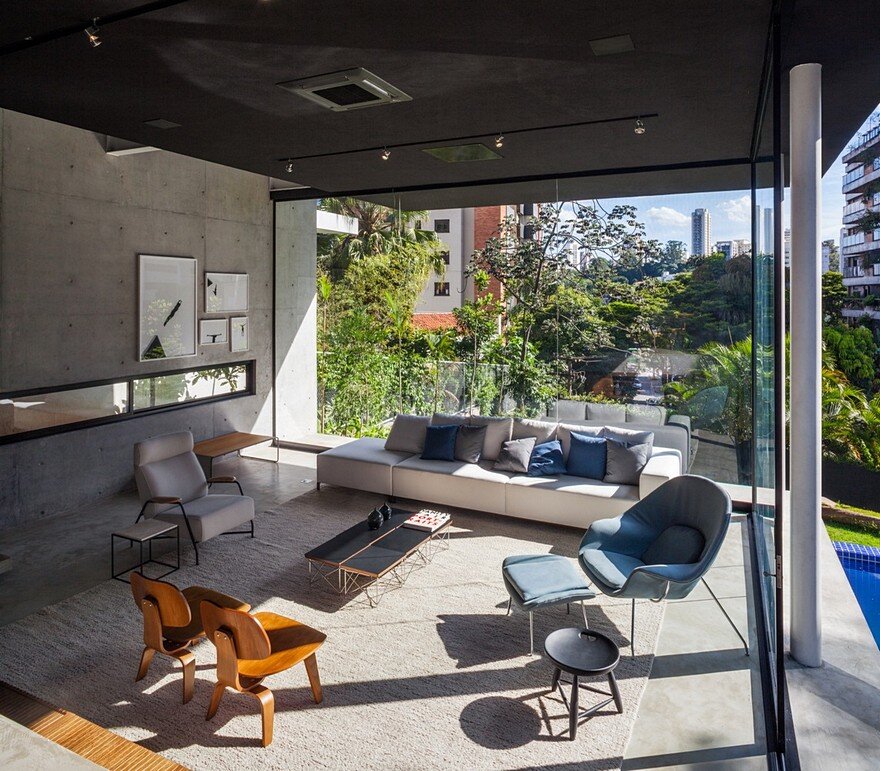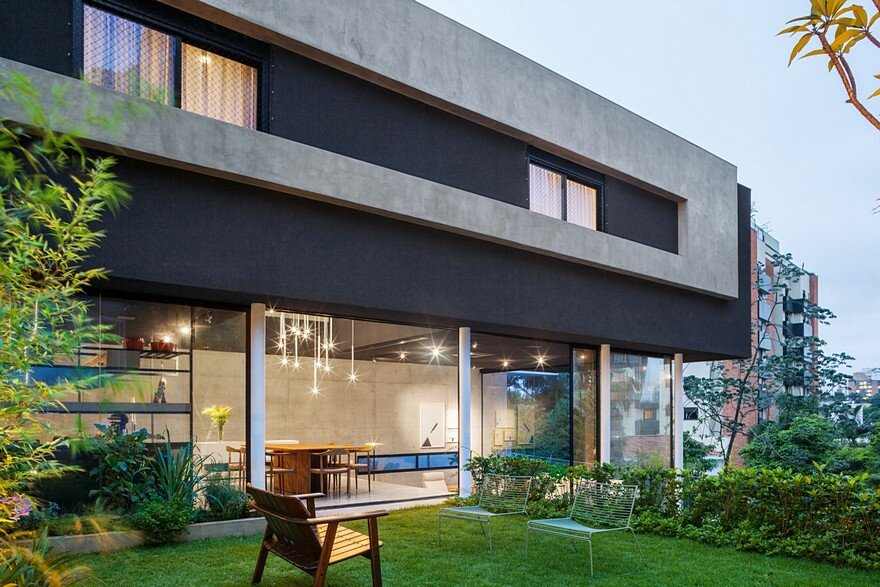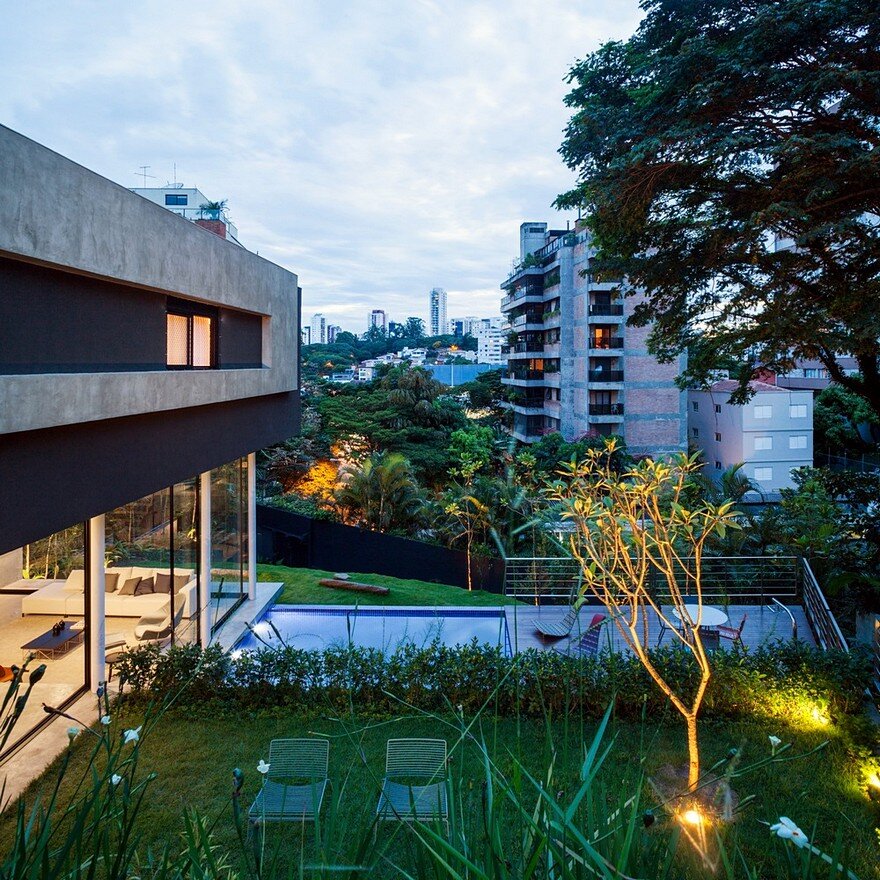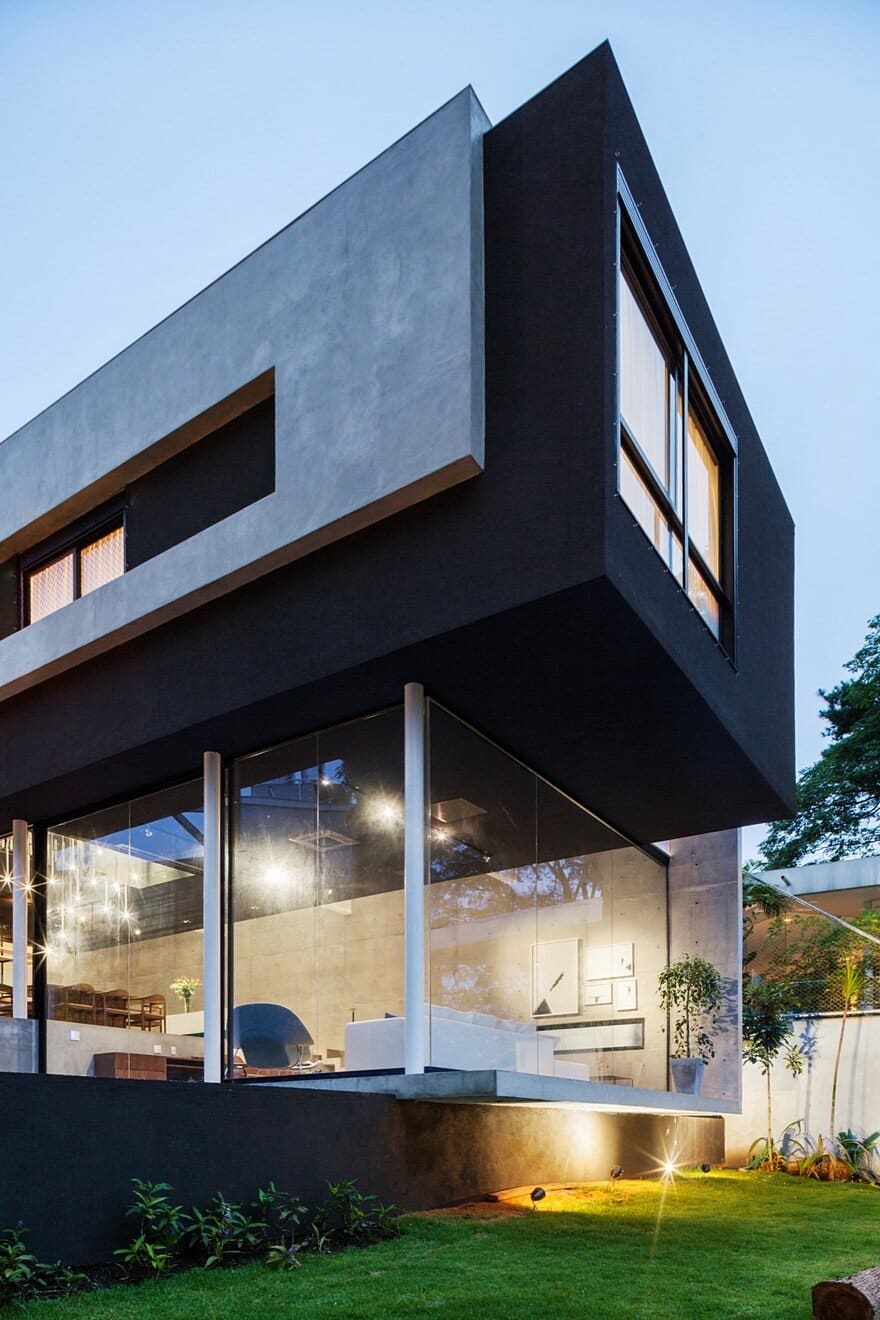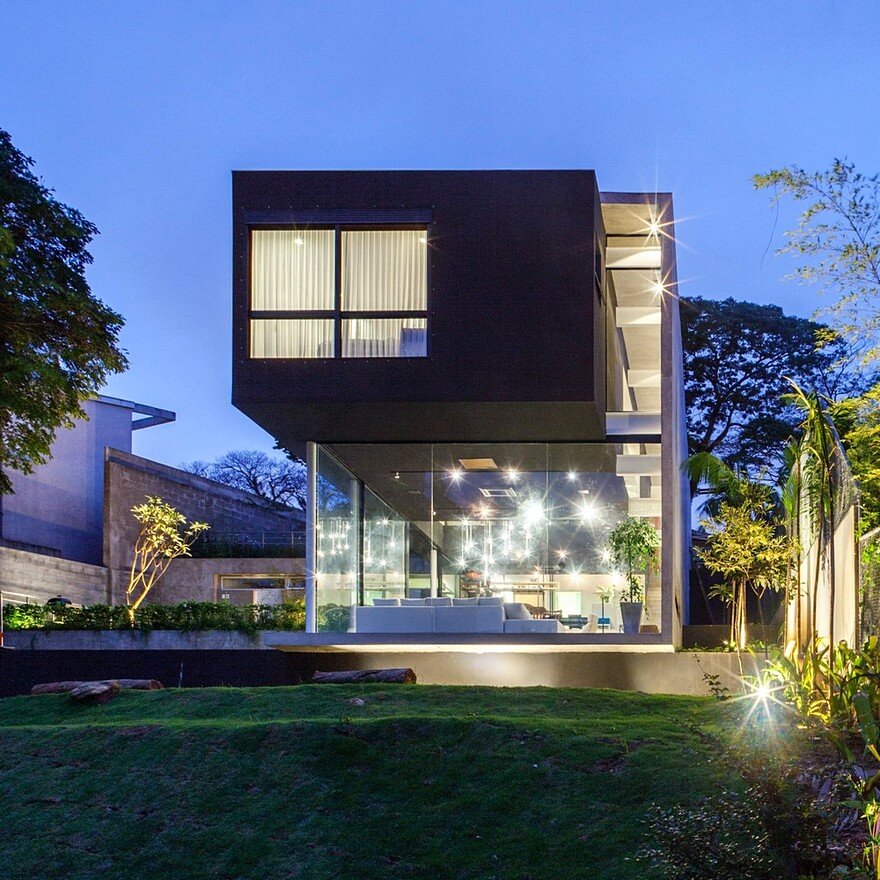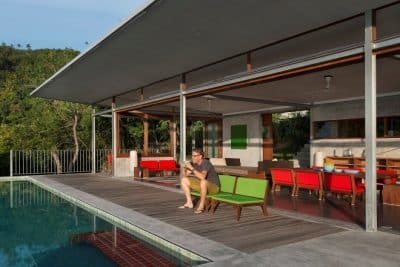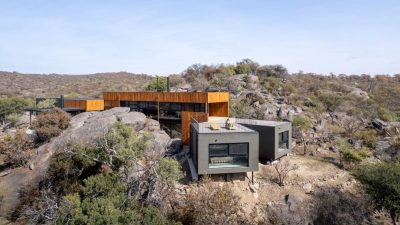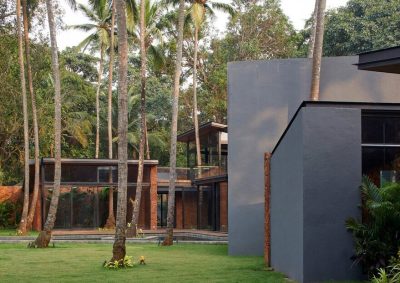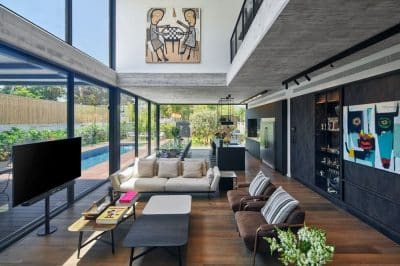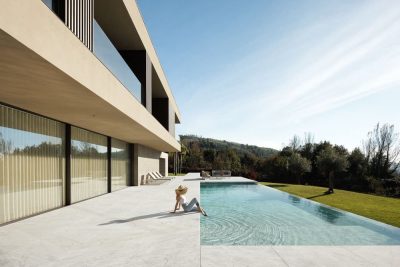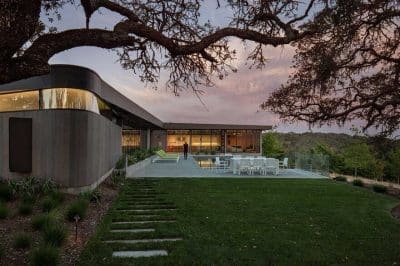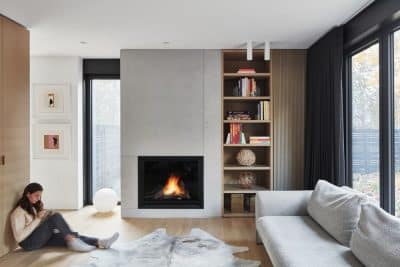Project: Mattos House
Architects: FGMF Arquitetos
Team: Fernando Forte, Lourenço Gimenes, Rodrigo Marcondes Ferraz
Area: 358.51 m2
Location: São Paulo, Brazil
Photography: Rafaela Netto
Design a house for a young family was the project’s main point. The steep-sloped site had a unique view to one of São Paulo’s main arterial roads. To use said site to our advantage in the creation of the house’s spaces, the attention to the circulation flows and the leisure area seemed to us like some of the most important questions to be addressed from the very beginning.
After further analysis of the site and the spatial organisation of the house, we decided to propose a level-oriented occupation. The first level contains the garage, the main access and a garden. The private areas are in this level, but the visitor can walks down a set of stairs, that follows the main hall, in order to access the second level. This second level houses the service areas, the gourmet kitchen and the dining room, accesses another garden level, and bears a double-height ceiling that links it to the home theatre and the above hallways. The last level also received higher ceilings and contains the living room, completely open to the view and an external plateau containing a solarium and the swimming pool.
The Mattos house is supported by a mixed-logic structural design in which a bare concrete wall, on the leftmost side of the house, connects the many levels and organises the main stairway that links them all. The rest of the house’s structure is composed of a lightweight steel-framing, allowing for larger-than-average glazed areas.
One of the main approaches was the structural and enclosure designs: the contrast between the intimate area’s heavy monolithic volume above and the social area’s light, glazed volume sectioned by the plateaux always seemed to us like a typical paulista school architecture solution, adequate to the location and the project’s necessities. Counterpart to that solution is the mentioned concrete wall that, depending on the visitor’s viewpoint, works to unite the different levels, as well as the facade, walls, structure and flooring.
We approached the relationship between the inside and the outside areas with exceptional care, working with the differences in ceiling height in order to further denote their differences and respect the architectural design. The aesthetic adopted when working the interiors was also very important to us – the house, with an essentially Brazilian-modern design bore a heavy emphasis in the contrast between solids and voids and weight and weightlessness, but it also seemed very important to us the seeking of a furniture setting that respected and emblazoned the paulista modernism past while maintaining a more contemporary approach to the design logic. For such, we also used of both modernist and classic pieces, such as Earnes’ Plywood Chair and Saarinen’s Womb couch, as well as contemporary Brazillian designs such as those of Jader Almeida, Marcus Silveira, Felipe Protti, Natasha Shlobach and Estúdio Bola.
The spatiality, almost minimalist in nature, was defined by glass panes, dark coating of the upper block and concrete on the walls and floors, which were all referenced by the choice of furniture. The finishing touch was perhaps the large lighting fixture hanging above on the dining room’s double-height ceilings. Composed by 36 individual pieces and designed in a joint effort by our office and the Prole studio. It can be seen from many different angles, including the living room, the dining room, the hallway that accesses the bedrooms and home theatre, working as another element that further integrates and links these different levels.

